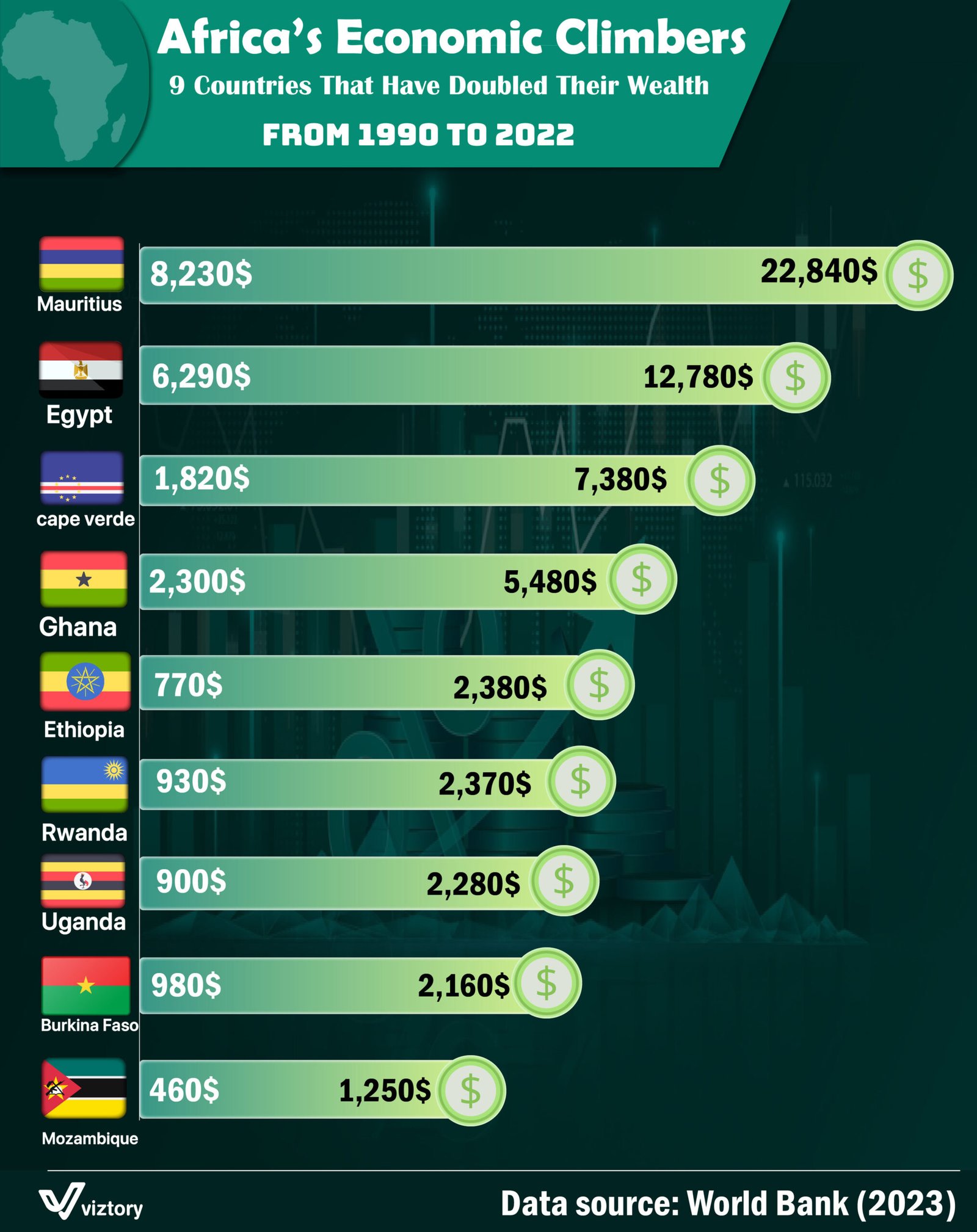Africa’s Economic Climbers: 9 Countries
-
Feb, Sat, 2025
Africa is emerging as a global economic force, with several countries making remarkable progress in doubling their wealth over the past three decades. According to data from the World Bank (2023), nine African nations have experienced significant economic growth, reflecting their resilience, reforms, and potential.
Mauritius: Leading the Way
Mauritius stands out with the most impressive growth, increasing its per capita wealth from $8,230 in 1990 to an astounding $22,840 in 2022. The island nation’s success stems from its diversified economy, strong financial services sector, and thriving tourism industry. Mauritius exemplifies how small economies can achieve global competitiveness through strategic investments and governance.
Egypt: North Africa’s Economic Pillar
Egypt follows with a leap from $6,290 to $12,780 per capita. This growth highlights Egypt’s focus on infrastructure, industrial development, and its strategic location as a hub for trade between Africa, Europe, and Asia. Recent investments in renewable energy and technology sectors signal continued upward momentum.
Cape Verde and Ghana: West African Success Stories
Cape Verde saw an incredible rise from $1,820 to $7,380, driven by tourism and a stable political environment. Ghana, another standout performer, increased its wealth from $2,300 to $5,480 by capitalizing on its natural resources, particularly gold and oil, alongside growth in agriculture and services.
East Africa’s Rising Stars
Ethiopia, Rwanda, and Uganda showcase the power of agricultural modernization and investment in human capital. Ethiopia surged from $770 to $2,380 per capita, fueled by infrastructure projects and industrial parks. Rwanda and Uganda, with increases from $930 to $2,370 and $900 to $2,280, respectively, highlight the impact of good governance and strategic economic policies.
Burkina Faso and Mozambique: Overcoming Challenges
Despite challenges, Burkina Faso and Mozambique doubled their per capita wealth, with Burkina Faso rising from $980 to $2,160 and Mozambique increasing from $460 to $1,250. These nations have leveraged their natural resources and international partnerships to achieve gradual economic progress.
Key Economic Drivers
The success of these countries can be attributed to several factors:
- Diversification: Many of these economies reduced dependency on single sectors, focusing on technology, manufacturing, and services.
- Infrastructure Development: Investments in roads, energy, and communication systems have spurred economic activity.
- Foreign Investment: Support from international organizations and partnerships has played a pivotal role in driving growth.
- Governance and Policy: Improved governance, political stability, and policy reforms have created conducive environments for economic development.
Conclusion
The economic growth of these African nations showcases the continent’s vast potential. As they continue to embrace technology, innovation, and sustainable practices, Africa’s role in the global economy is set to expand. These success stories are not just milestones but also roadmaps for other countries seeking economic transformation.
Source:
- World Bank (2023)

